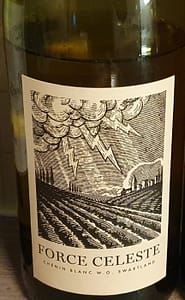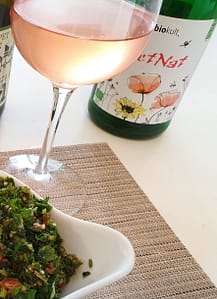Here is another “house wine”, when I want a little more power, or “skin”, than a normal white. Swartland, Blackland in the Afrikaans language, because the predominant rhinoceros bush turns dark after the rains. But it’s not only the landscape that is special here; the spirit of the winegrowers is a veritable force.
Mother Rock Wines was established in 2014 by Johan Meyer. I have written about the project before (like here), and I still predict that the producer will rise in fame and his wines accordingly rise. The news are that Johan and his partner Anri moved into their new property Plattenklip (northwestern Swartland) in 2019, and produced their first vintage in 2020 in their own winery. They have now planted new vineyards on exciting sites, so we know that there will be new interesting wines from them.
This wine comes from a single vineyard in Paardeberg planted in 1980, on granite-rich soil. Only chenin blanc, pure chenin. Whole bunches were pressed into steel tanks where the fermention starts naturally. It’s mostly aged in steel, but has seen a small amount of old oak. Unfiltered and without added sulphuur.
Force Celeste 2020 (Mother Rock)
Light yellow. Aromas of citrus, yellow apples, peach, a light touch of peel. Good weight in the mouth, creamy lees-character, but with a very fine acidity that cuts elegantly through, and contributes to a long, salty finish.
Price: Low
Food: Tapas and charcuterie, red fish, fried white fish, light meat…
Leave a Comment
















